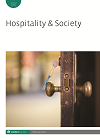
Full text loading...
 , Adam Doering1
, Adam Doering1
The increasing popularity of walking pilgrimage has created new forms of interaction and exchange between pilgrims and residents along pilgrimage routes. As a result, religious hospitality along these pilgrimage routes is also under transformation. Drawing on ethnographic fieldwork conducted along the Koyasan Choishi-michi pilgrimage route in Wakayama, Japan, this article examines how the meanings and experiences of osettai (‘religious hospitality’) change over time and space. Focusing specifically on the role tourism plays in the current transformation of religious hospitality, the article begins with a historical analysis of osettai and its meanings in pre-modern Japan. Next, we examine how osettai was interrupted due to the decline in walking pilgrims, but also sustained through the maintenance of indirectly related religious practices. The discussion then outlines the transforming meanings of osettai from a practice of giving offerings in return for spiritual reward, to a commodified economic service and finally to a form of cultural exchange. We conclude that placing religious faith as a central theme of analyses, not tourism, can offer new insights and deepen our understandings of how religious hospitality is both transformed and maintained through tourism.

Article metrics loading...

Full text loading...
References


Data & Media loading...

Publication Date:
https://doi.org/10.1386/hosp_00052_1 Published content will be available immediately after check-out or when it is released in case of a pre-order. Please make sure to be logged in to see all available purchase options.